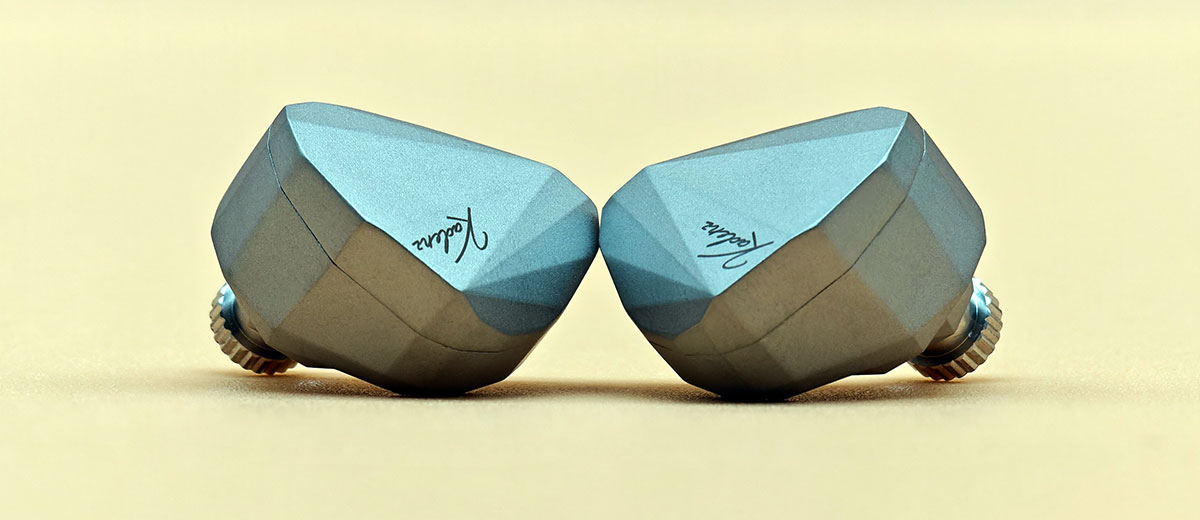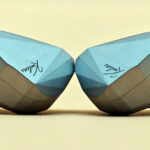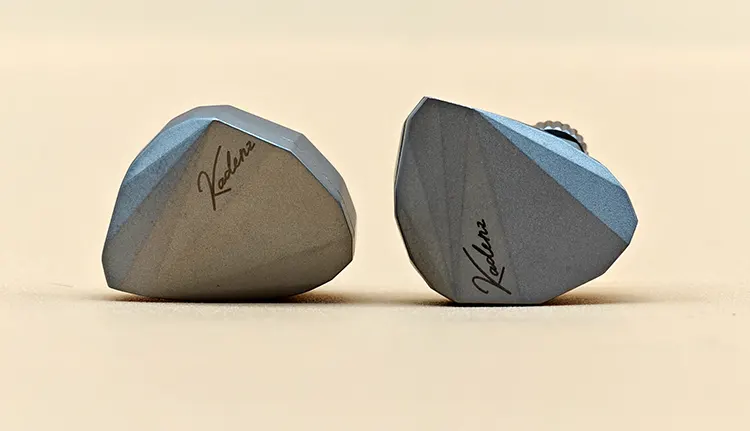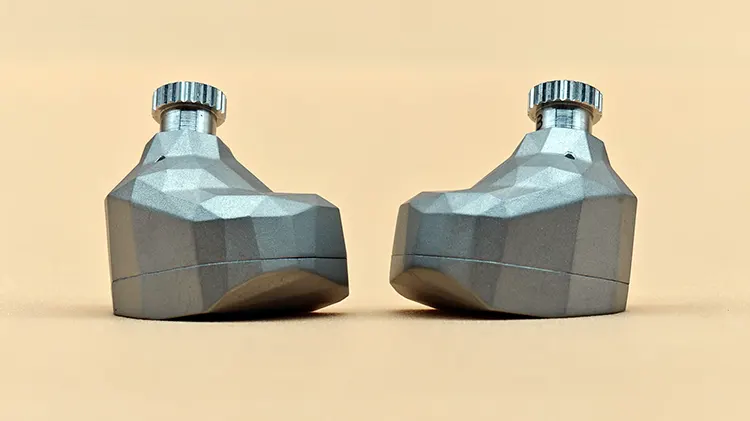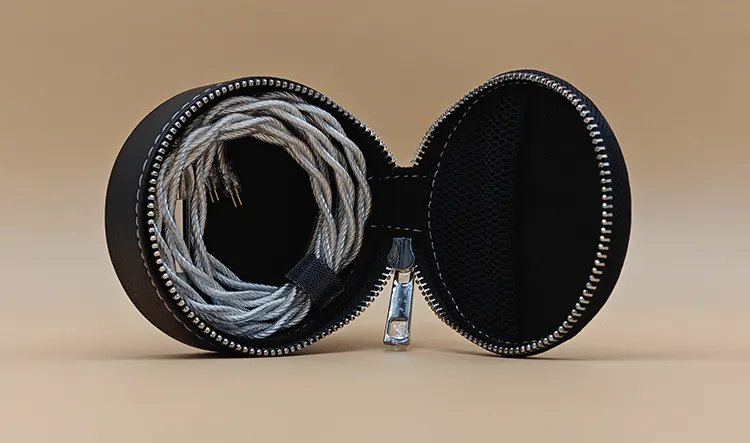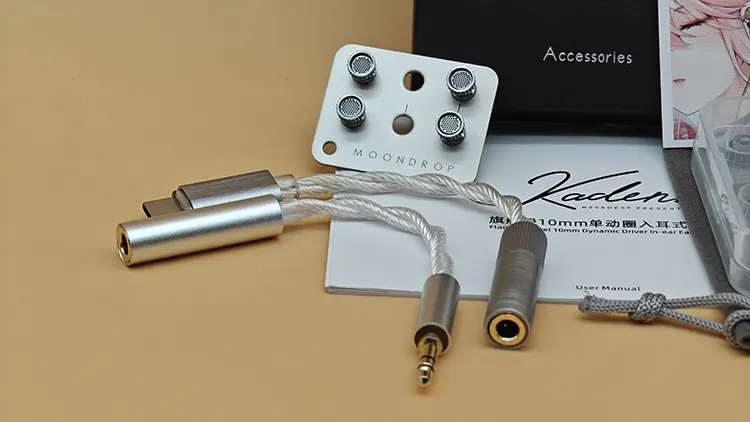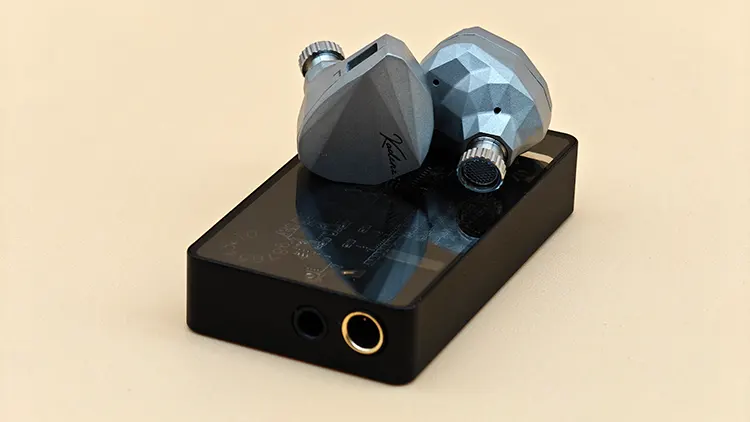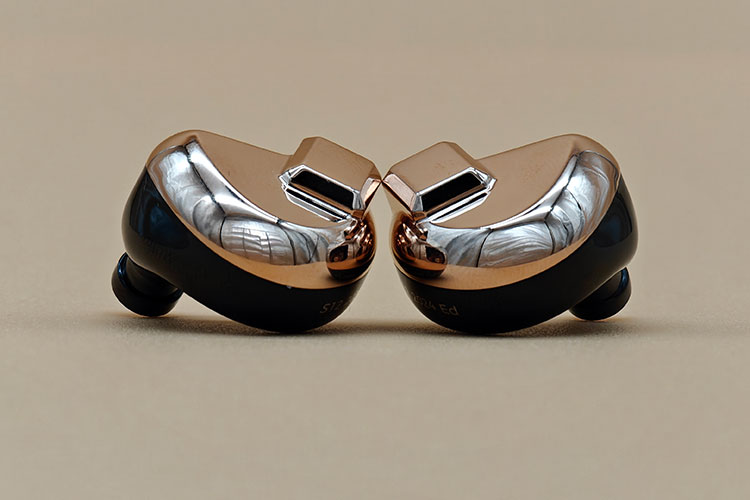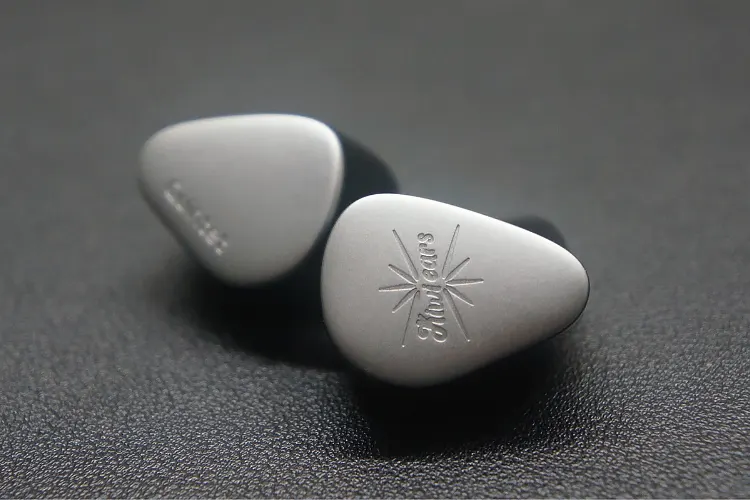In this feature, Kurt reviews the MOONDROP Kadenz, a new ULT-Gen2 10mm single dynamic driver in-ear monitor and the successor to the KATO. It is priced at $189.99.
Disclaimer: This sample was sent to me in exchange for my honest opinion. Headfonics is an independent website with no affiliate links or status. I thank MOONDROP and Shenzhen Audio for their support.
Click here to read more about MOONDROP products we have previously reviewed on Headfonics.
This article follows our current scoring guidelines, which you can read here in more detail.
The MOONDROP KATO was one of the most beloved products from MOONDROP, praised for its price, aesthetics, and sound quality, making it an IEM known among beginners and experienced audio enthusiasts alike.
Three years after its release, MOONDROP has launched the $189.99 MOONDROP Kadenz, which is considered the “spiritual” successor to the KATO.
However, with many great options available today, is the MOONDROP Kadenz a compelling choice? I explore this in my full 11:11 review below.
Features
The MOONDROP Kadenz features a single dynamic driver similar to that in the MOONDROP KATO, with a large 10mm dynamic driver.
However, the Kadenz’s dynamic driver is an advanced version developed over two years of design, testing, and improvement. MOONDROP calls it the ULT Gen-2 super-linear dynamic driver, featuring new irregular magnetic circuits.
This driver uses a TAC diamond-coated dome composite diaphragm. While the base remains an LCP (Liquid Crystal Polymer), the diamond coating enhances rigidity, treble extension, and bass dynamics, and reduces distortion.
Design
The MOONDROP Kadenz’s design is reminiscent of the previous MOONDROP KATO, but it has more defined edges and a sturdier build.
The finish has shifted from KATO’s shiny appearance to a smooth matte metal shell. The word “Kadenz” is aesthetically printed in cursive, adding a premium feel like a signature on a painting.
The inner shell includes a vent to prevent pressure build-up, and the matte finish resists fingerprints, so no constant cleaning is needed. The Kadenz also continues the KATO’s feature of replaceable nozzles, offering three types—one more than the KATO.
Comfort & Isolation
Users considering the MOONDROP Kadenz for daily use should note that its sharp corners may cause discomfort.
The edge near the Kadenz logo has caused some irritation to my ears due to its metal tip. I first noticed the issue after feeling slight pain due to the constant pressure from that corner.
To avoid discomfort, I adjusted to a shallow fit, affecting both comfort and isolation. However, I switched to the DUNU S&S tips to accommodate the long yet shallow fit, preserving the sound quality.
Ear Tips
The MOONDROP Kadenz comes with two sets of ear tips: standard black silicone tips and MOONDROP’s popular Spring Tips.
The black silicone tips provide a typical listening experience, but the Spring Tips offer a better fit.
These wide-bore tips have a sticky yet grippy texture, ensuring the IEMs stay in place. They don’t dampen bass or treble and are compatible with short, long, wide, and narrow nozzles on the Kadenz.
Stock Cable
The Kadenz cable is one of my favorite accessories. Aesthetically, it resembles jewelry with its white and silver accents, and physically, it’s a high-quality cable made of high-purity single-crystal copper with silver plating.
Notably, the Kadenz comes with a 4.4mm cable, as MOONDROP appears to favor DSP and 4.4mm formats over 3.5mm.
For those who still prefer 3.5mm, MOONDROP includes accessories to accommodate them. The cable is neither stiff nor tangly, making it a suitable daily-use cable for the Kadenz.
Packaging & Accessories
MOONDROP provides a complete package with the Kadenz, akin to a game released with all DLCs included. Inside the box, you’ll find a carrying case, the IEM, and an accessories box, all neatly arranged to showcase the carrying case and Kadenz faceplate.
The accessories box contains two extra nozzles, a 4.4mm to 3.5mm adapter, a 4.4mm to USB-C adapter, ear tips with a pouch, and warranty cards.
The carrying case holds the premium cable, with ample space for tips, a DAC dongle, and the IEM with its cable.
The 4.4mm to 3.5mm adapter suits those who prefer 3.5mm, while the 4.4mm to USB-C dongle, named ECHO-B, is a high-performance 32-bit adapter supporting 32-bit/384kHz PCM audio.
This adapter is also useful for DSP, as the Kadenz offers different tuning options in the MOONDROP app, including Normal, Bass+, Bass++, Treble+, and Soundstage+ settings.
My preferred tuning is Bass+, as it makes minimal compromises, while the Bass++ setting scoops the mids excessively.
Sound Impressions
The MOONDROP Kadenz was tested exclusively using the 4.4mm normal tuning. The various tuning options in the app were only used for comparisons with the normal setting.
Bass
With its upgraded dynamic driver, the bass has also been enhanced. Nearly every aspect of the bass performance is improved compared to the MOONDROP KATO. The Kadenz no longer sounds muddied, and the clarity improvement is very noticeable, with more defined bass.
While it may not be the strongest or most impactful bass, it is adequately detailed and of excellent quality. Bass-heads may find it lacking without using the Bass+ or Bass++ EQ with the dongle.
However, the bass is well-defined, with no bleed, clear separation between sub-bass and mid-bass, and a cohesive integration with the mids and treble.
The sub-bass provides a good rumbling effect, though it could benefit from a bit more presence. There are times when it doesn’t adequately balance the brightness of the Kadenz.
Using the Bass+ EQ can help with this if it sounds too bright. Although some mid-bass will be scooped out when using this setting, normally, the mid-bass is sufficiently thick, providing a full-bodied sound experience.
Mids
The mids are the highlight of the MOONDROP Kadenz, and they are perhaps its best feature.
Similar to the MOONDROP KATO, the timbre is outstanding, rivaling its competitors. The vocals sound wonderfully musical, with no lack of note weight. They are also forward, bright, and exceptionally clear, offering a lot of energy without being shouty.
Some listeners might find this level of brightness fatiguing, but the Bass+ EQ can help mitigate this. Additionally, the mids have enough warmth to prevent the sound from becoming too dry or analytical.
Treble
The MOONDROP KATO had some concerns regarding treble detail retrieval, but the Kadenz improves in this area with better treble extension and air, thanks to the driver upgrades.
However, while it outperforms the KATO, Kadenz’s detail retrieval is still just above average. The transients are natural but slower than ideal.
The treble emphasizes vocals and instruments, lending the overall sound a bright character without being overly so. Sibilance is managed well, leaving just enough to make the sound pop.
For those who want to hear every intricate detail in their music, the Treble+ EQ is an option, though it does reduce bass noticeably to achieve greater treble extension.
Staging & Dynamics
The soundstage and imaging of the MOONDROP Kadenz are the next best aspects after the midrange. Improvements over the KATO are immediately noticeable.
The Kadenz offers a real sense of depth in the soundstage, with well-placed lower and higher stage levels that enhance imaging.
Vocals are centered, while instruments and other sounds utilize the larger stage effectively, achieving precise imaging without sounding cluttered. The dynamics are well-balanced, with no elements overpowering one another.
Synergy
Efficiency
The MOONDROP Kadenz comes only with a 4.4mm cable, though a 4.4mm to 3.5mm adapter is included in the box.
Using the ECHO-B dongle, the Kadenz is not difficult to power, though it does require a slight volume boost.
With a sensitivity of 122 dB/Vrms and an impedance of 35Ω, the Kadenz has higher-than-average sensitivity and impedance for an IEM. My usage was exclusively with the 4.4mm cable; I did not test the 3.5mm adapter.
Pairings
The MOONDROP Kadenz shows excellent scalability with power, and the differences in DAC chips also influence its sound to a degree. I typically listen at around 70dB on Apple Music, which provides a balanced experience without risking ear damage.
Using the Kadenz with the ECHO-B and no EQ on my phone provided a solid experience, with minimal battery drain and no overheating issues.
When paired with my Colorfly CDA-M2, which has a CS43198 chip, the vocals sounded warmer, though the bass was slightly muddier.
My best experience was with the HeartField R1, an R2R DAC & AMP, where I was genuinely impressed by the increased clarity in the Kadenz’s bass, midrange, and treble.
Select Comparisons
LETSHUOER S12 2024 Edition
Technical
The LETSHUOER S12 2024 Edition is a refreshed version of the popular LETSHUOER S12, using a custom 14.88mm planar magnetic driver.
It was made to commemorate LETSHUOER’s 8th Anniversary, with an upgraded driver based on the previous S12 and S12 Pro.
The S12 2024 has been extensively tuned using data from the earlier S12 series, and this time it’s limited to 2,024 pieces for sale.
Design
As a commemorative IEM, the LETSHUOER S12 2024 Edition is gold-colored with a titanium alloy shell. The design retains the classic S12 shape but with additional polishing for a refined look.
The shiny gold color of the shell is smooth to the touch, with a semi-opaque black design that is slightly more slippery than the faceplate.
The shape is rounded with no sharp corners, and each IEM is labeled with its unit number from production.
Performance
The bass difference between the LETSHUOER S12 2024 Edition and the MOONDROP Kadenz is minimal, with a similar sub-bass experience.
The main distinction lies in the mid-bass, where the Kadenz outshines the S12 2024 with its punchier, fuller sound.
The Kadenz also excels in the midrange with its fantastic timbre, which the S12 2024 cannot quite match, even with improvements over the previous S12 model. The S12 2024 has a breathy timbre that doesn’t sound as natural as the Kadenz.
In terms of treble, the S12 2024 demonstrates its strengths, delivering more detail and nuance. There are subtle sounds in the music that are only audible when using the S12 2024, which the Kadenz does not reveal as clearly.
While staging and imaging are similar, the Kadenz provides more depth and precision, creating a more immersive experience. However, sibilance control is handled better with the S12 2024, while the Kadenz may have some spiciness in the treble that could be bothersome for some listeners.
Kiwi Ears Quintet
Technical
The Kiwi Ears Quintet is a unique hybrid IEM featuring a single dynamic driver, 2 balanced armature drivers, 1 planar driver, and a piezoelectric driver.
The dynamic driver is a 10mm DLC driver, the balanced armatures are 2 Knowles BAs, the planar driver is a new MPT (micro planar transducer) shaped like a BA, and the piezoelectric driver acts as a bone conduction driver.
This distinctive setup gives the Quintet a unique sound, though it comes with its own set of pros and cons.
Design
The Kiwi Ears Quintet sports a traditional black and white color scheme with a 3D-printed resin shell and a metal faceplate.
The left faceplate has the “Quintet” name engraved while the right faceplate displays the Kiwi Ears logo and brand name. The faceplate is resistant to fingerprints and minor scratches, ensuring durability to protect the drivers housed within.
Performance
Initially, the MOONDROP Kadenz and Kiwi Ears Quintet sound similar, but their differences become more apparent over time.
The Quintet has a stronger sub-bass presence, whereas the Kadenz emphasizes the mid-bass. Overall, the Quintet’s bass is more neutral and balanced, providing better support for the treble than the Kadenz.
The Kadenz, however, performs better in the midrange, thanks to its superior timbre. While the Quintet avoids the typical BA timbre, it has a lighter note weight compared to the Kadenz, which gives the Kadenz a more musical quality.
In the treble, the Quintet has more extension but is considerably brighter and more prone to sibilance. The Kadenz’s treble is smoother and better controlled but not as extended as the Quintet’s.
For staging and imaging, the Kadenz has the edge, with greater depth and layering. The Quintet, despite its planar driver, lacks layering and depth, which can detract from the overall soundstage experience.
My Verdict
The MOONDROP Kadenz is a proper successor to the beloved MOONDROP KATO. It keeps the charm of the KXXS and KATO with an eye-catching and appealing design.
Not only is the driver upgraded for better bass and treble, but also the full-on jump to 4.4mm and USB-C DSP make the MOONDROP Kadenz a proper upgrade.
MOONDROP Kadenz Technical Specifications
- Driver Type: One (1x) 10mm dynamic driver
- Plug: Modular 4.4mm balanced (4.4mm to 3.5mm connector and 4.4mm to USB-C dongle)
- Frequency Response: 8Hz – 21kHz
- Impedance: 35 ohm @1kHz
- Sensitivity: 122 dB/Vrms

